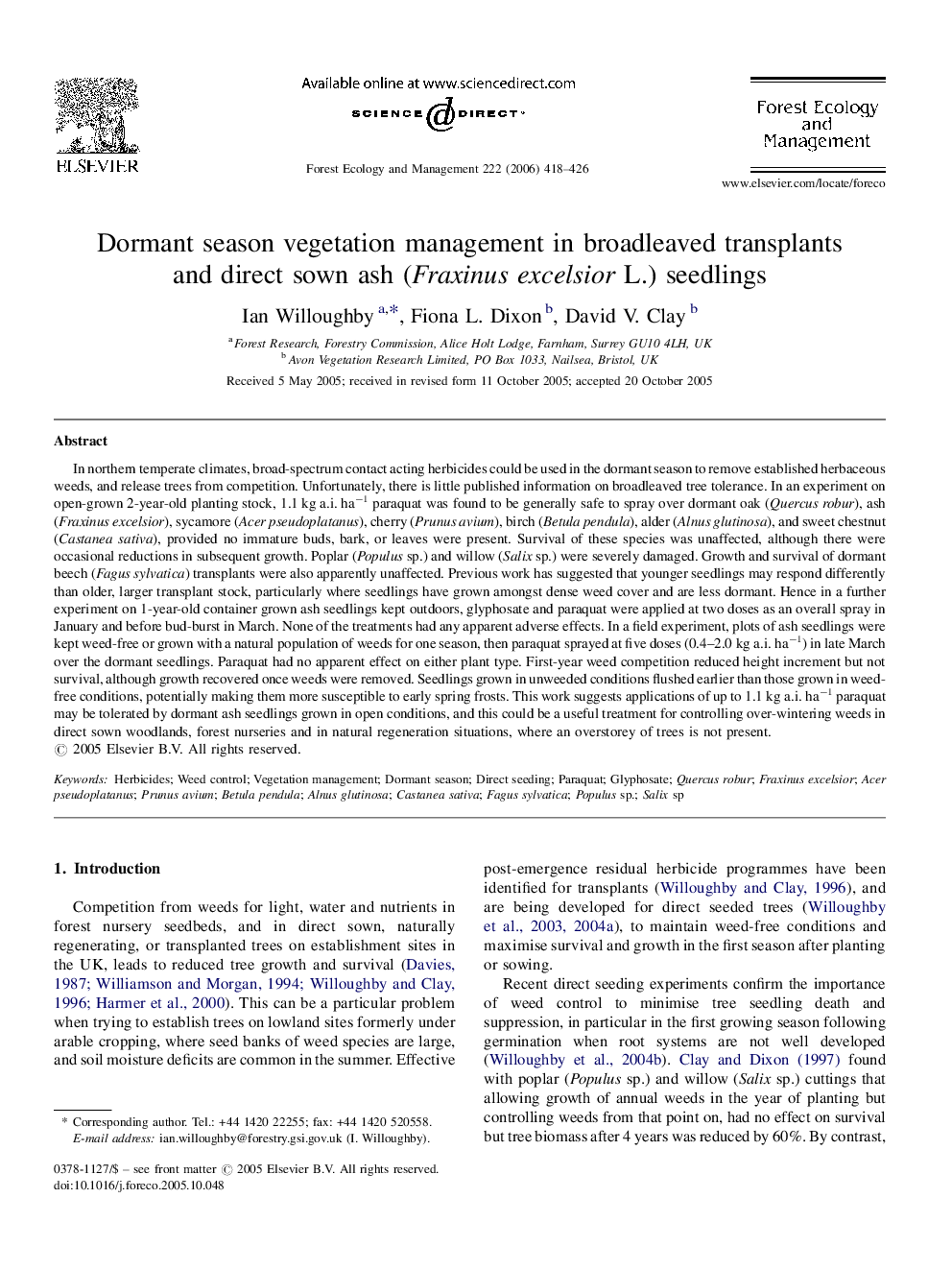| کد مقاله | کد نشریه | سال انتشار | مقاله انگلیسی | نسخه تمام متن |
|---|---|---|---|---|
| 90732 | 159392 | 2006 | 9 صفحه PDF | دانلود رایگان |

In northern temperate climates, broad-spectrum contact acting herbicides could be used in the dormant season to remove established herbaceous weeds, and release trees from competition. Unfortunately, there is little published information on broadleaved tree tolerance. In an experiment on open-grown 2-year-old planting stock, 1.1 kg a.i. ha−1 paraquat was found to be generally safe to spray over dormant oak (Quercus robur), ash (Fraxinus excelsior), sycamore (Acer pseudoplatanus), cherry (Prunus avium), birch (Betula pendula), alder (Alnus glutinosa), and sweet chestnut (Castanea sativa), provided no immature buds, bark, or leaves were present. Survival of these species was unaffected, although there were occasional reductions in subsequent growth. Poplar (Populus sp.) and willow (Salix sp.) were severely damaged. Growth and survival of dormant beech (Fagus sylvatica) transplants were also apparently unaffected. Previous work has suggested that younger seedlings may respond differently than older, larger transplant stock, particularly where seedlings have grown amongst dense weed cover and are less dormant. Hence in a further experiment on 1-year-old container grown ash seedlings kept outdoors, glyphosate and paraquat were applied at two doses as an overall spray in January and before bud-burst in March. None of the treatments had any apparent adverse effects. In a field experiment, plots of ash seedlings were kept weed-free or grown with a natural population of weeds for one season, then paraquat sprayed at five doses (0.4–2.0 kg a.i. ha−1) in late March over the dormant seedlings. Paraquat had no apparent effect on either plant type. First-year weed competition reduced height increment but not survival, although growth recovered once weeds were removed. Seedlings grown in unweeded conditions flushed earlier than those grown in weed-free conditions, potentially making them more susceptible to early spring frosts. This work suggests applications of up to 1.1 kg a.i. ha−1 paraquat may be tolerated by dormant ash seedlings grown in open conditions, and this could be a useful treatment for controlling over-wintering weeds in direct sown woodlands, forest nurseries and in natural regeneration situations, where an overstorey of trees is not present.
Journal: Forest Ecology and Management - Volume 222, Issues 1–3, 15 February 2006, Pages 418–426